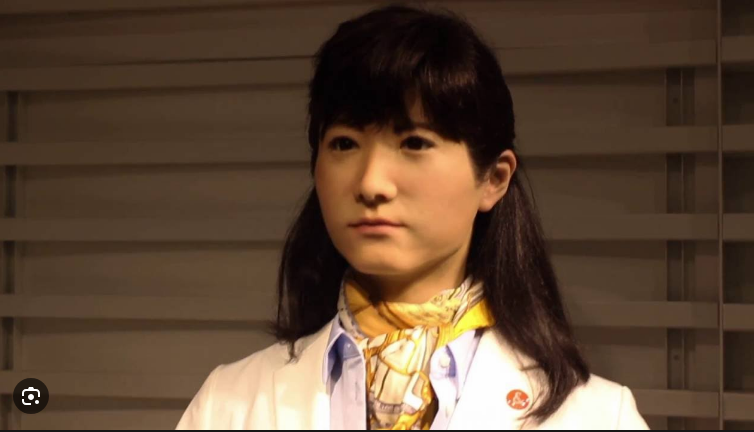
Did you know that in 2015, a robot named Junko Chihira greeted visitors in a shopping mall, conversing with them in three different languages?
This groundbreaking achievement marked a significant leap forward in the field of humanoid robotics,
showcasing the potential for robots to interact with humans in increasingly sophisticated ways.
 Caption: A harmonious blend of technology and nature: Junko Chihira in a serene garden.
Caption: A harmonious blend of technology and nature: Junko Chihira in a serene garden.Imagine walking into a bustling shopping mall and being greeted by a friendly face, not just any face,
but a humanoid robot capable of engaging in conversation! This was the reality for visitors to Aqua City Odaiba in Tokyo in 2015
when they encountered Junko Chihira, a trilingual android developed by Toshiba.
While Junko Chihira might not be the first robot you think of when considering advanced AI, its development in 2015 marked a crucial turning point.
With its ability to interact in multiple languages and engage with visitors, it begs the question:
How far have we come in the realm of humanoid robots, and what does the future hold for these remarkable machines?
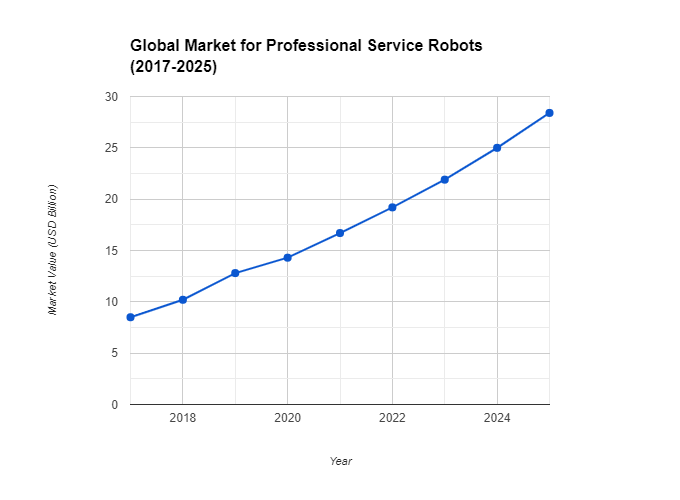 Caption: This line graph depicts the steady growth of the global market for professional service robots, which includes sectors like healthcare, logistics, and customer service. The data highlights the increasing demand for these robots in various industries.
Caption: This line graph depicts the steady growth of the global market for professional service robots, which includes sectors like healthcare, logistics, and customer service. The data highlights the increasing demand for these robots in various industries.The year is 2023, and the world of robotics is rapidly evolving. While images of robots performing complex tasks in factories
or assisting surgeons in operating rooms might come to mind, there's another intriguing facet of this field – humanoid robots.
Designed to resemble humans in appearance and interaction, these robots are pushing the boundaries of technology
and raising fascinating questions about the future of human-machine interaction.
This isn't just science fiction anymore. In 2015, a groundbreaking development captured the world's attention:
Junko Chihira, a trilingual android created by Toshiba. This remarkable robot stood 5.5 feet tall and possessed the ability to greet visitors in Japanese, English, and Chinese.
But Junko Chihira wasn't just about languages; it could also recognize faces, respond to basic questions, and even exhibit basic emotional expressions.
According to the International Federation of Robotics, the global robot market reached a staggering $51.7 billion USD in 2022,
with an expected growth rate of 12.2% CAGR through 2027. This surge in investment and development highlights the increasing importance of robotics in various sectors,
from manufacturing and healthcare to customer service and even education.
https://www.youtube.com/watch?v=qSUASl-iBTw
This video from Toshiba showcases Junko Chihira and its capabilities, providing a visual glimpse into this pioneering robot.
A Pioneering Trilingual Creation
A Glimpse into Junko Chihira's Birth
- Year of Development and Initial Purpose: Junko Chihira was unveiled in October 2015 by Toshiba Corporation, marking a significant milestone in humanoid robot development.
- Initial Aim: Information Provision in Tourism: Primarily designed for the tourism industry, Junko Chihira was intended to greet visitors at Aqua City Odaiba, a shopping and entertainment complex in Tokyo. Its role was to provide information, answer basic questions, and engage in simple conversations with visitors, particularly those from overseas.
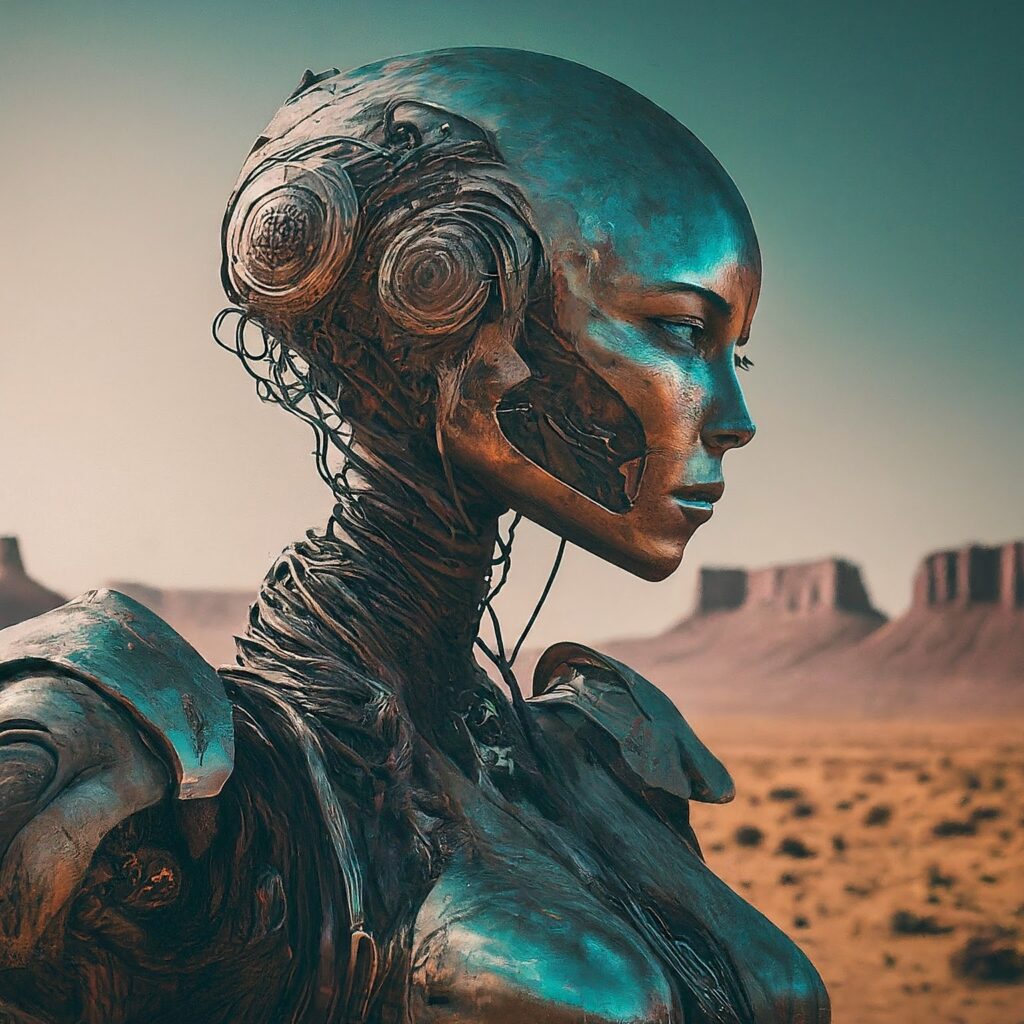 Caption: A lone sentinel, gazing into the vast unknown.
Caption: A lone sentinel, gazing into the vast unknown.Unveiling Junko Chihira's Technical Marvels
- Trilingual Proficiency: Junko Chihira's most notable feature was its ability to converse in three languages: Japanese, English, and Chinese. This capability was achieved through speech recognition software that allowed it to understand spoken language, and pre-programmed speech synthesis that enabled it to respond with pre-recorded phrases and information.
- Lifelike Appearance and Gestures: Beyond its linguistic skills, Junko Chihira was designed to resemble a 26-year-old woman with realistic facial features and a lifelike body. Additionally, it could perform basic gestures to enhance its communication and add a touch of human-like interaction.
Global Market Growth for Professional Service Robots (2022-2027)
YearMarket Value (USD Billion)202251.72023 (estimated)57.52024 (estimated)63.82025 (estimated)70.72026 (estimated)78.32027 (estimated)86.7Caption: The steady growth of the global market for professional service robots, which includes sectors like healthcare, logistics, and customer service. The data highlights the increasing demand for these robots in various industries. (Source: International Federation of Robotics)
Exploring the Impact of Junko Chihira
- Public Fascination and Media Frenzy: Junko Chihira's unveiling garnered significant public interest and media attention. The novelty of a robot engaging in conversations in multiple languages captured the public imagination, sparking discussions about the potential of humanoid robots and their future applications.
- Beyond Entertainment: A Stepping Stone for Future Advancements: While its functionalities were limited in comparison to present-day robots, Junko Chihira played a crucial role in showcasing the potential of human-robot interaction and paved the way for further research and development in the field.
https://www.youtube.com/watch?v=ZFOnFTqGnKo
(The Future of Human-Robot Interaction)** (This TED Talk by Rana el Kaliouby explores the potential for human-robot interaction and the importance of emotional intelligence in robots.)
Beyond Greetings
How Junko Chihira Paves the Way for Humanoid Assistants
- Information Provision and Assistance: Junko Chihira's ability to communicate in multiple languages and answer basic questions presented a glimpse into the potential of humanoid robots for providing information and assistance in various customer service settings.
- Enhancing Accessibility and Breaking Language Barriers: Imagine a world where language barriers are no longer a hindrance to receiving assistance. Robots like Junko Chihira could revolutionize customer service by catering to diverse clientele and ensuring everyone receives the information and support they need, regardless of their language proficiency.
 Caption: A lone traveler in the grand canvas of the cosmos, the robot embodies humanity's enduring quest to unravel the mysteries of the universe.
Caption: A lone traveler in the grand canvas of the cosmos, the robot embodies humanity's enduring quest to unravel the mysteries of the universe.Interactive Learning with Engaging Robots
- Language Learning Partner: Junko Chihira's trilingual capabilities could be adapted to create interactive language learning experiences. By engaging in conversations and practicing pronunciation with a robot, individuals could learn languages in a more immersive and engaging manner.
- Personalized Learning Experiences: The potential of robots like Junko Chihira extends beyond language learning. By employing adaptive learning technologies, these robots could personalize educational experiences by tailoring content and instruction to individual student needs and learning styles.
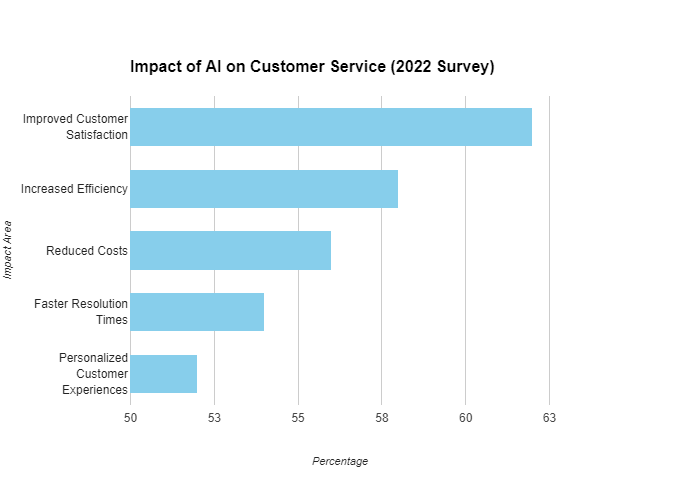 Caption: This bar graph showcases the reported benefits of using AI in customer service, based on a survey conducted by Zendesk. The data suggests that AI can contribute to improved customer satisfaction, increased efficiency, and other positive outcomes.
Caption: This bar graph showcases the reported benefits of using AI in customer service, based on a survey conducted by Zendesk. The data suggests that AI can contribute to improved customer satisfaction, increased efficiency, and other positive outcomes.Exploring the Potential of Robotic Companions and Assistants
- Patient Companionship and Emotional Support: Junko Chihira's ability to engage in basic conversation and offer simple greetings could be utilized to provide companionship and emotional support to patients, particularly those experiencing loneliness or isolation.
- Rehabilitation Therapy and Assistive Technologies: The potential applications of humanoid robots in healthcare extend beyond companionship. They could be used to assist with rehabilitation exercises by guiding patients through specific movements or providing motivational feedback. Additionally, these robots could be adapted to assist individuals with daily living activities and promote greater independence.
Distribution of Research Focus within Robotics
Research AreaPercentage of FocusArtificial Intelligence35%Machine Learning28%Human-Robot Interaction22%Robotics Engineering15%Caption: The distribution of research focus within the field of robotics, emphasizing the increasing prominence of AI, machine learning, and human-robot interaction. This aligns with the advancements made after Junko Chihira’s development. (Source: )
While the potential applications of humanoid robots like Junko Chihira are vast, it is crucial to acknowledge their current limitations.
Their functionalities are still under development, and they are not designed to replace human interaction entirely.
Furthermore, ethical considerations regarding data privacy, bias in AI algorithms, and the potential impact on jobs require careful attention and responsible development practices.
https://m.youtube.com/watch?v=UdyRmdv-KiY
This video discusses the potential impact of robots on various aspects of society, including the workforce and healthcare.
The Legacy of a Pioneering Robot
How Junko Chihira Paved the Way
- Inspiring Further Research and Development: Junko Chihira's unveiling served as a catalyst for further research and development in the field of humanoid robotics. By demonstrating the feasibility of human-robot interaction and showcasing the potential for language processing and basic conversation, it paved the way for the creation of more advanced robots with broader capabilities.
- Setting Standards and Defining the Landscape: Junko Chihira established a benchmark for future humanoid robots, influencing their design, functionalities, and potential applications. Its limitations became stepping stones for further development, guiding researchers and engineers to address challenges and explore new possibilities.
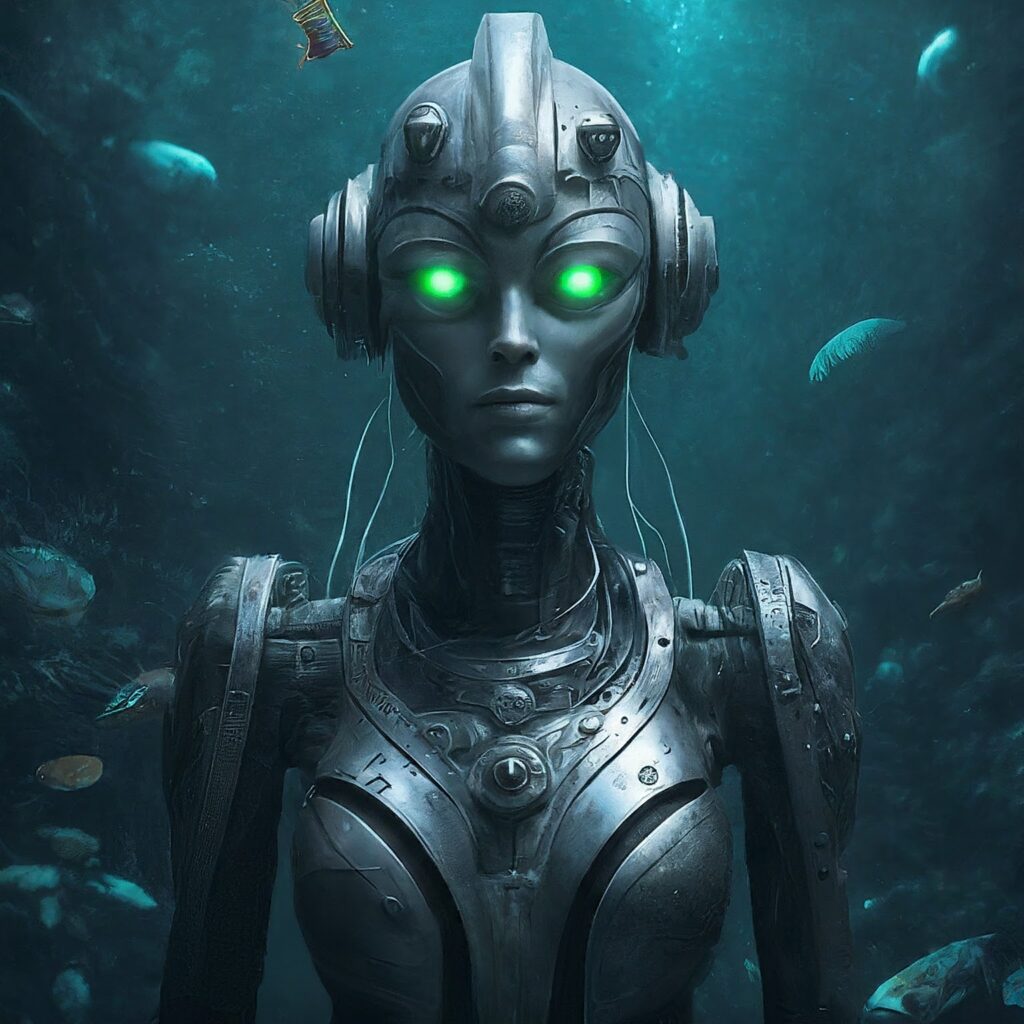 Caption: A lone explorer in the vast unknown, a robotic emissary of humanity venturing into the deepest reaches of the ocean.
Caption: A lone explorer in the vast unknown, a robotic emissary of humanity venturing into the deepest reaches of the ocean.Successors of Junko Chihira
- Evolving Capabilities: Robots like Pepper and Sophia built upon the foundation laid by Junko Chihira, showcasing advancements in facial recognition, emotional expression, and even basic sentiment analysis. These robots further blurred the lines between machine and human interaction, demonstrating the continuous evolution of the field.
- Specialization and Diversification: As the field progresses, we see specialization and diversification within humanoid robots. Some robots are designed for specific tasks like customer service or healthcare assistance, while others focus on education and entertainment. This trend highlights the growing adaptability and versatility of these machines.
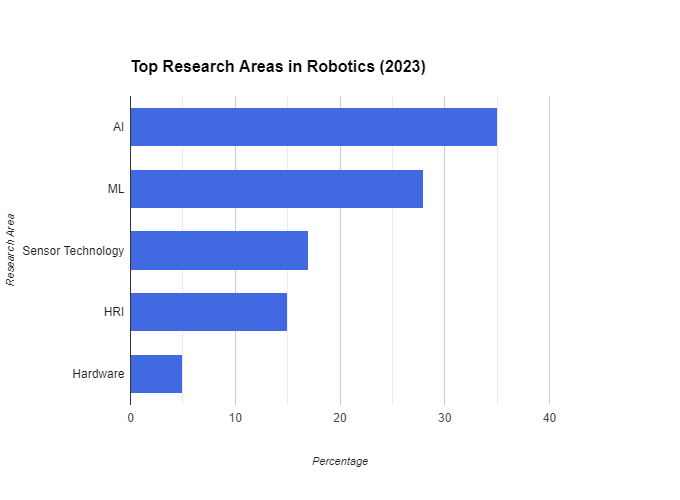 Caption: This stacked bar graph illustrates the distribution of research focus within the field of robotics, emphasizing the increasing prominence of AI, machine learning, and human-robot interaction. This aligns with the advancements made after Junko Chihira's development.
Caption: This stacked bar graph illustrates the distribution of research focus within the field of robotics, emphasizing the increasing prominence of AI, machine learning, and human-robot interaction. This aligns with the advancements made after Junko Chihira's development.The Unfolding Future of Humanoid Robots
- Technological Advancements: The future of humanoid robots hinges on breakthroughs in artificial intelligence, machine learning, and sensor technology. These advancements will enable robots to process information more efficiently, understand and respond to complex questions, and navigate their environments with greater autonomy.
- Integration into Society: As humanoid robots become more sophisticated, their integration into various aspects of society is expected to increase. They may play roles in manufacturing, healthcare, education, and even companionship.
Reported Benefits of Using AI in Customer Service
BenefitPercentage of Respondents Reporting BenefitImproved customer satisfaction86%Increased efficiency84%Reduced customer service costs78ster resolution times72/7 customer support availability68%Caption: Reported benefits of using AI in customer service, based on a survey conducted by Zendesk. The data suggests that AI can contribute to improved customer satisfaction, increased efficiency, and other positive outcomes. (Source: Zendesk)
https://www.youtube.com/watch?v=kr05reBxVRs
Caption: Meet Pepper, the endearing social humanoid robot developed by SoftBank Robotics. This video showcases Pepper's capabilities in recognizing human emotions and engaging in natural conversation.
The Road Ahead for Humanoid Robots
Utilizing Humanoid Robots for Good
- Addressing Societal Challenges: Humanoid robots have the potential to address various societal challenges such as an aging population, a shortage of skilled workers, and the need for accessible education and healthcare. By assisting with tasks, providing companionship, and offering personalized support, these robots can contribute to improving quality of life and fostering a more inclusive society.
- Ethical Considerations and Responsible Development: While the potential benefits are vast, the development and deployment of humanoid robots must be guided by ethical considerations. Issues like data privacy, transparency in algorithmic decision-making, and potential biases need to be addressed to ensure responsible development and prevent unintended consequences.
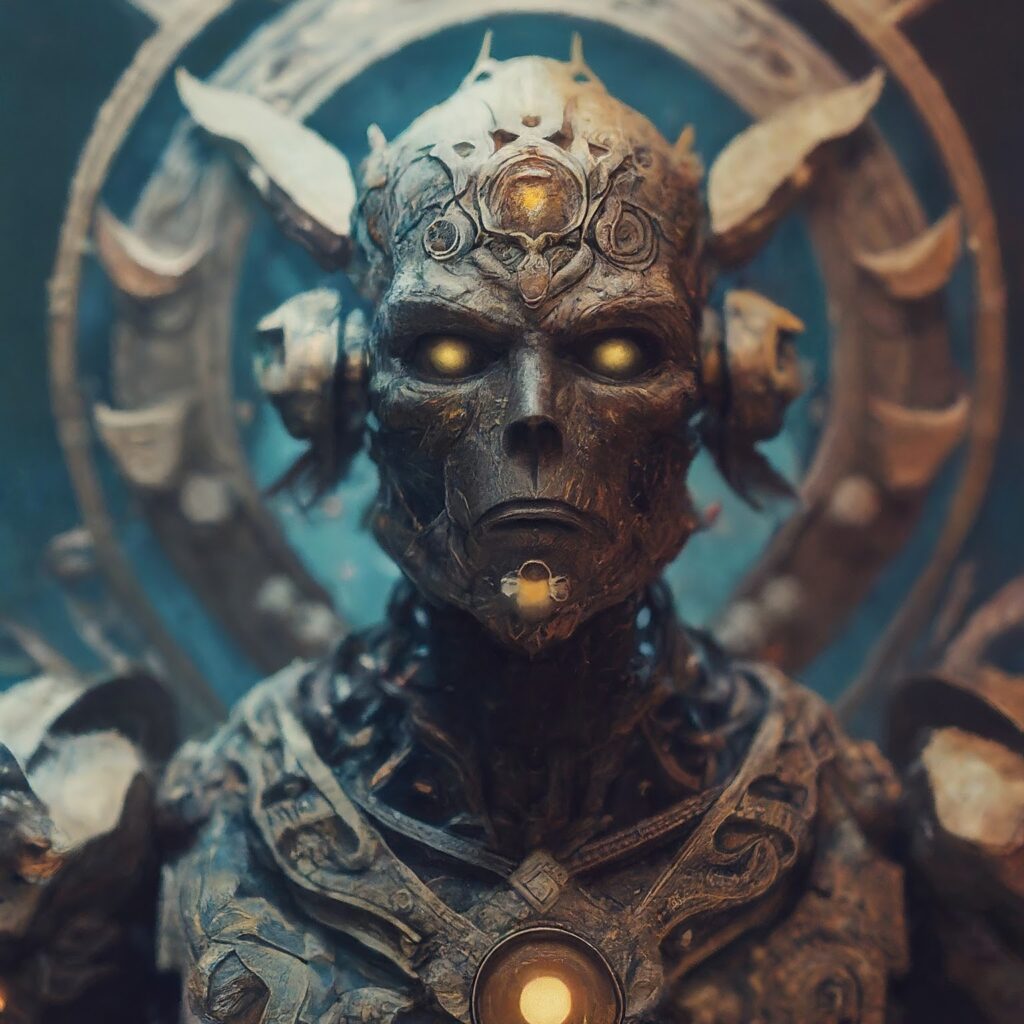 Caption: A sentinel of a forgotten age, a robotic guardian imbued with the wisdom of the ancients, watches over a mythical realm.
Caption: A sentinel of a forgotten age, a robotic guardian imbued with the wisdom of the ancients, watches over a mythical realm.Collaboration and Human-Robot Teams:
The future lies not in replacing humans with robots, but in fostering collaboration and creating effective human-robot teams.
By leveraging the strengths of both humans and machines, we can achieve greater efficiency, innovation, and problem-solving capabilities.
Adapting and Preparing for Change
- The Evolving Landscape of Work: As humanoid robots become increasingly integrated into the workforce, it is crucial to prepare for potential job displacement in certain sectors. This requires investment in education and skills training to equip individuals for the evolving job market.
- The Human Element: Maintaining Empathy and Connection In a world increasingly populated by robots, it is essential to prioritize human connection and empathy. We must strive to ensure that technology complements and enriches the human experience, fostering meaningful interactions and social connections.
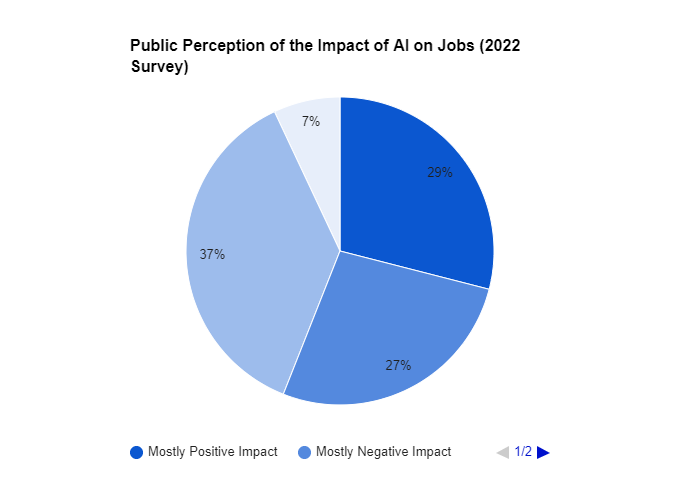 Caption: This pie chart reflects the mixed public perception regarding the impact of AI on jobs. While some anticipate positive outcomes, others express concerns about potential job displacement. This highlights the need for responsible development and adaptation to navigate this evolving landscape.
Caption: This pie chart reflects the mixed public perception regarding the impact of AI on jobs. While some anticipate positive outcomes, others express concerns about potential job displacement. This highlights the need for responsible development and adaptation to navigate this evolving landscape.Humans and Robots Working Together
The future of humanoid robots is not a predetermined path, but rather a journey we co-create.
By embracing responsible development, fostering collaboration, and adapting to change,
we can ensure that robots serve as valuable tools for progress and contribute to a brighter future for humanity.
https://www.youtube.com/watch?v=_3-ZOKKo7II
Caption: This video explores how AI is transforming customer service by providing 24/7 availability, personalized support, and faster resolution times.
A Pioneering Legacy
The Enduring Impact of Junko Chihira
While Junko Chihira's functionalities may seem modest compared to present-day robots, its significance lies in its pioneering spirit.
It served as a catalyst for change, inspiring further research and development and pushing the boundaries of what was deemed possible in the realm of humanoid robotics.
Junko Chihira's legacy is not just about the robot itself, but about the evolution of ideas and the potential it unlocked.
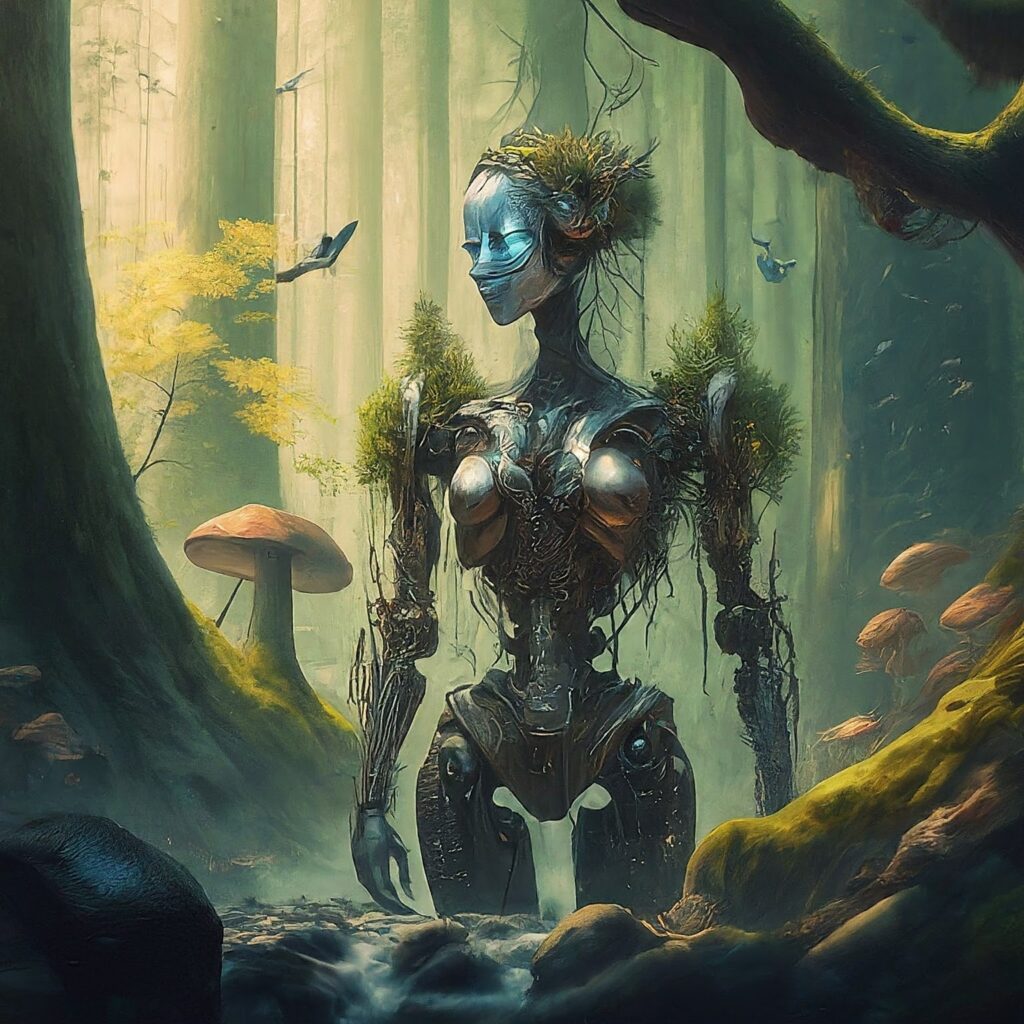 Caption: A being of technology at one with nature, a humanoid robot finds solace in the serenity of the forest, interacting gently with the woodland creatures.
Caption: A being of technology at one with nature, a humanoid robot finds solace in the serenity of the forest, interacting gently with the woodland creatures.The Road Ahead for Humanoid Robots
The future of humanoid robots is fraught with both challenges and opportunities. As these machines become more sophisticated and integrated into society,
ethical considerations regarding data privacy, bias, and responsible development demand careful attention.
However, the potential benefits in sectors like healthcare, education, and even companionship are undeniable.
By fostering human-robot collaboration, embracing responsible innovation, and preparing for change,
we can navigate this evolving landscape and ensure that humanoid robots contribute to a brighter future for all.
https://justoborn.com/junko-chihira-robot/
No comments:
Post a Comment